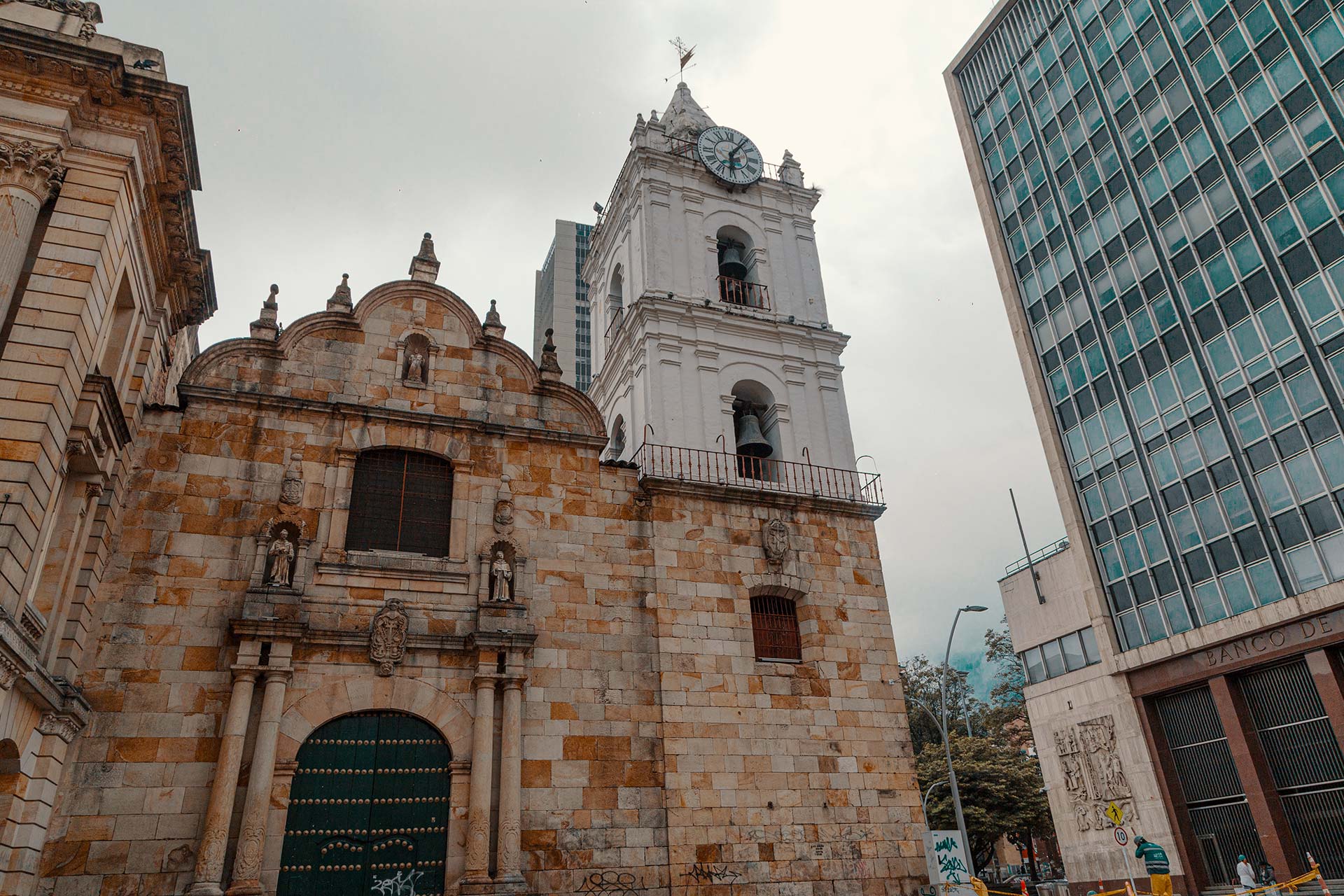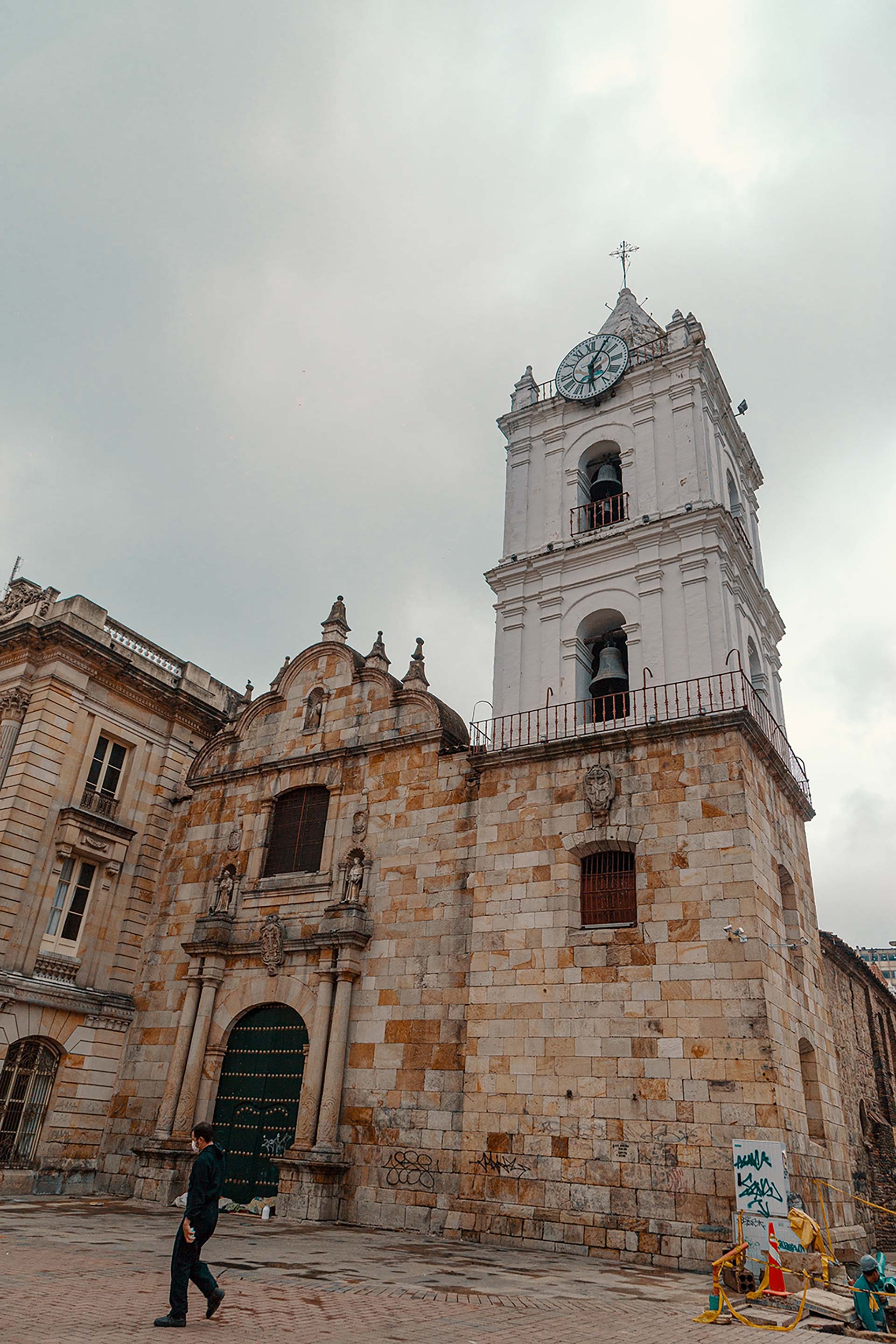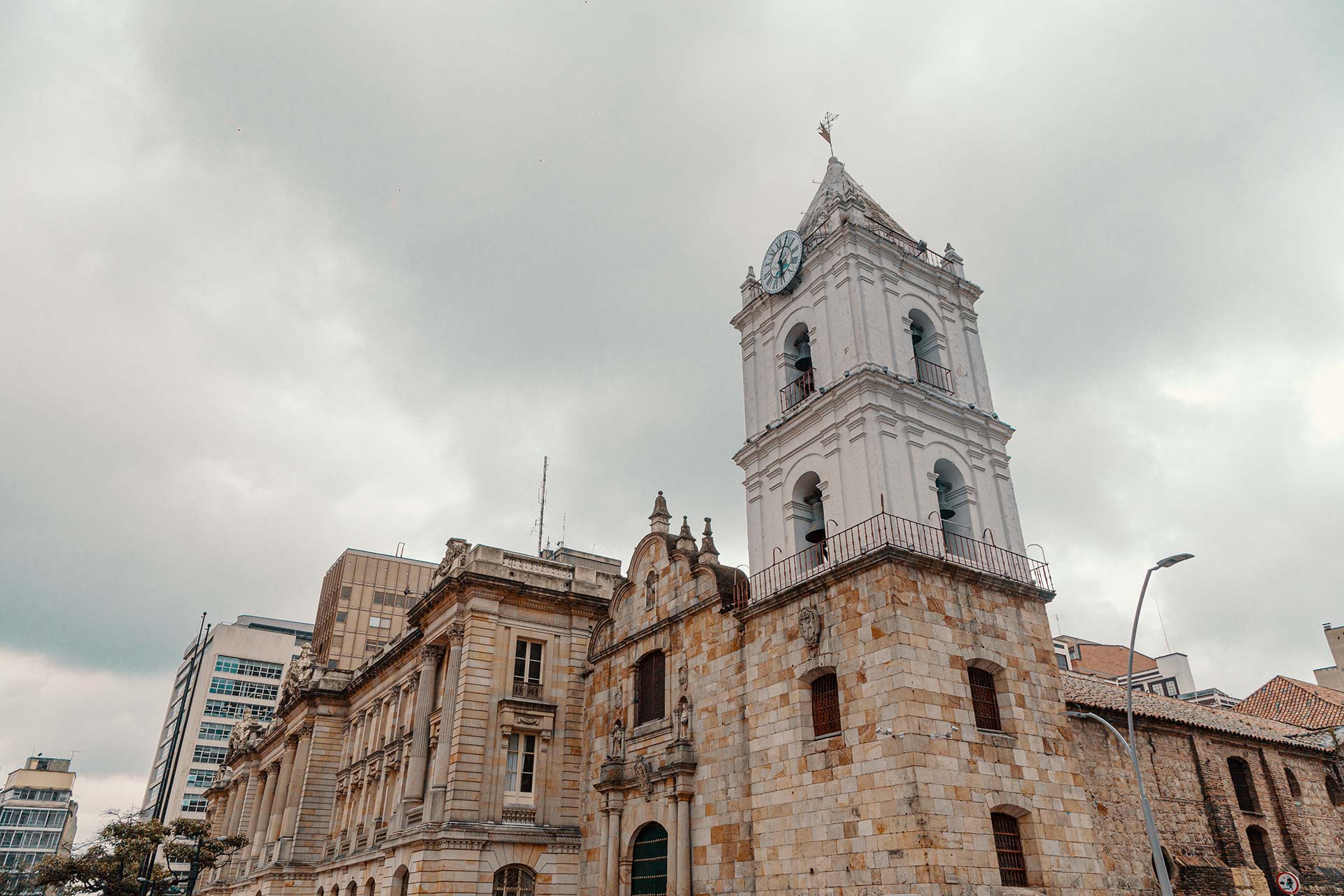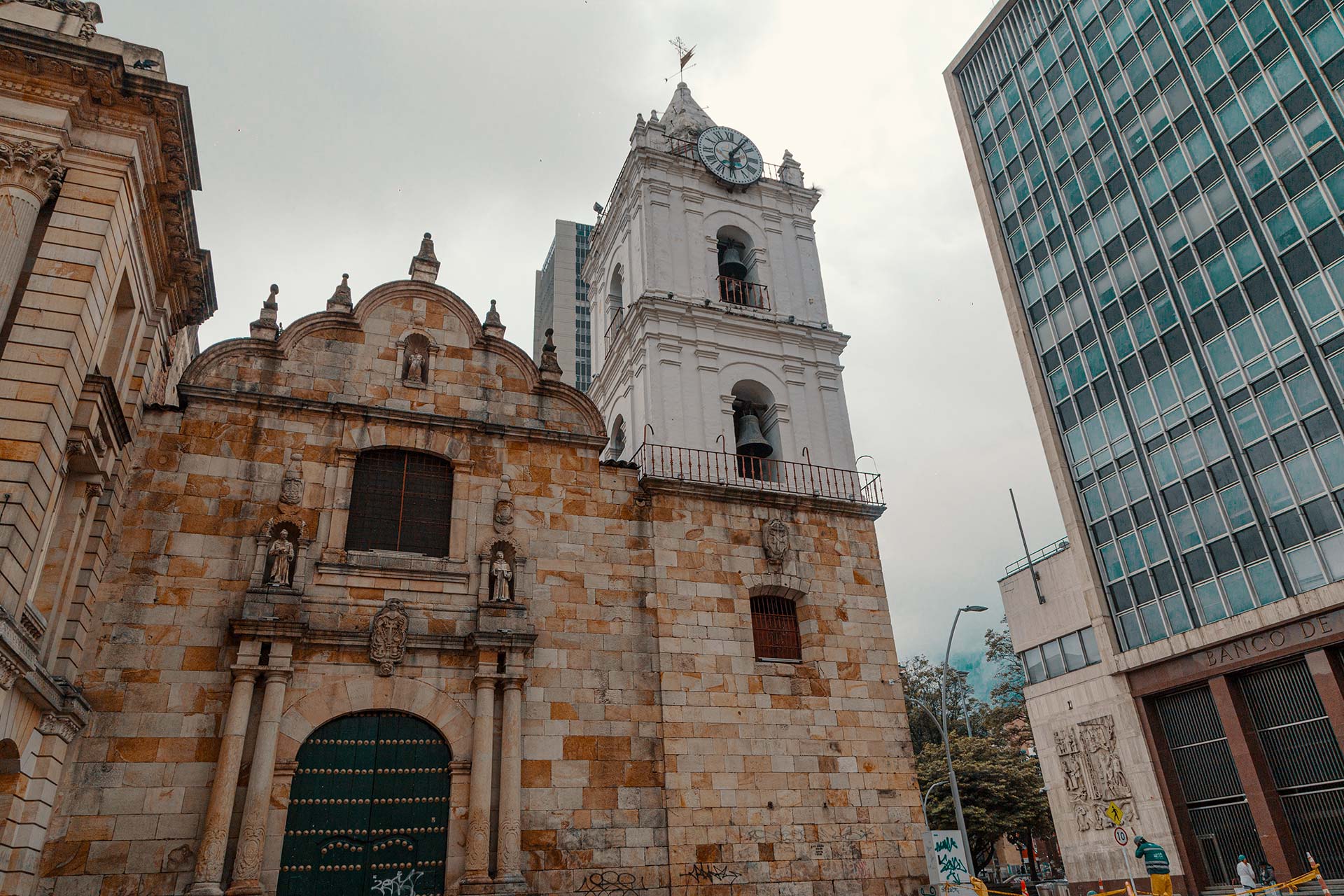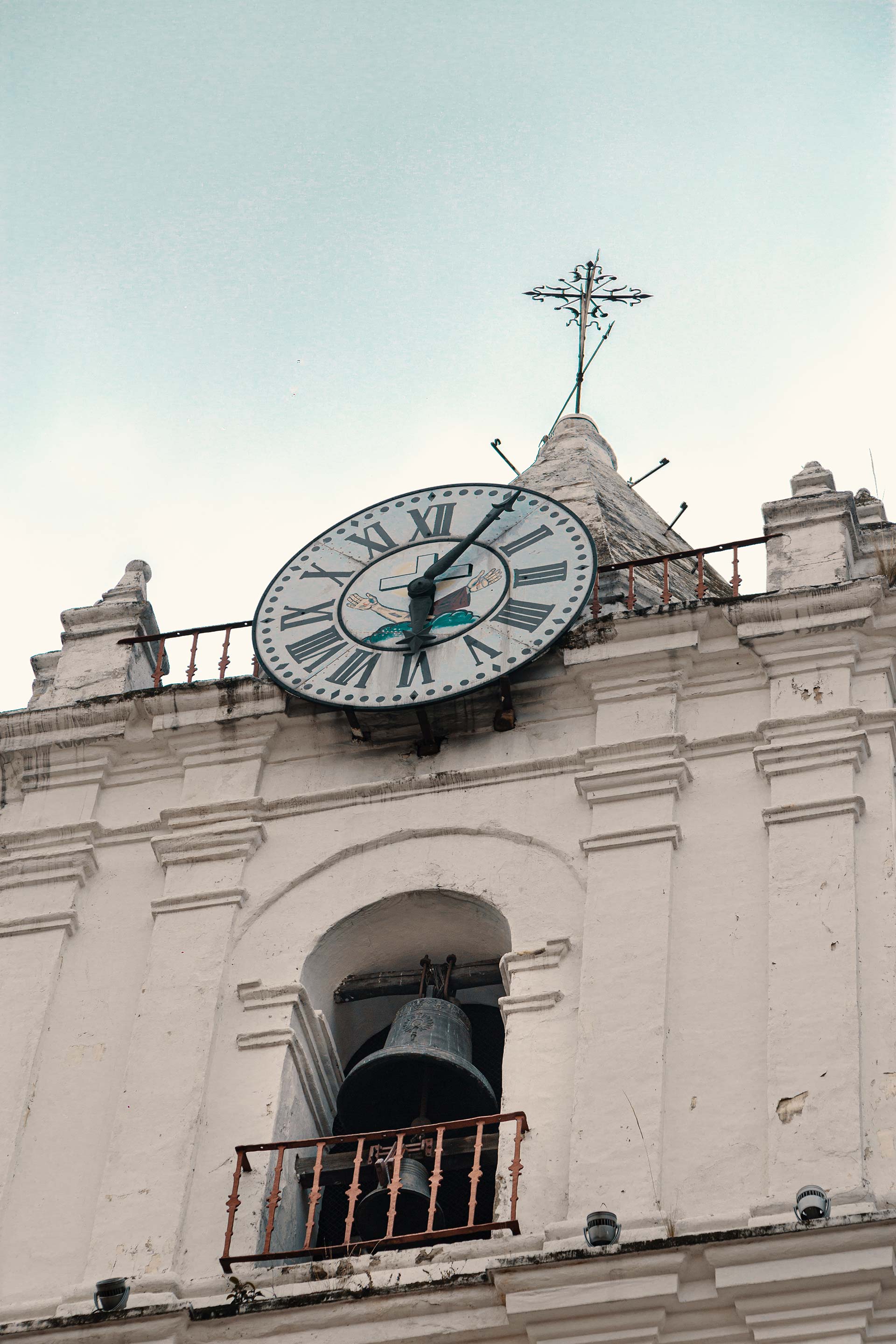It is the oldest church in Bogota. It all began with the arrival of the fathers of the Franciscan Order to the New Kingdom of Granada in 1550. The first site was located on Carrera Séptima under the name of Parroquia de las Nieves; later, it was moved to the site now occupied by the church of San Agustín. Finally, in 1557, the temple was moved to its current location, to the houses donated by Archbishop Fray Juan de los Barrios. With faith and effort they were able to build the convent that comprised two blocks. This construction was enlarged between 1586 and 1611; in 1623 the main altarpiece was built. Unfortunately, the earthquake of 1785 caused serious damage to the structure, so the tower had to be rebuilt. The Provincial Curia had its headquarters here until 1861, when the Franciscans were expelled and the property passed into the hands of the military Tomás Cipriano de Mosquera. It was thought to be used as a prison, but finally the government of Cundinamarca was installed here. Several earthquakes in 1917 caused serious damage to the governor's building, so it had to be demolished. The last restoration of the church took place between 1988 and 1990. In its beginnings, the building had only one nave, but as time went by, the number of parishioners increased. For this reason, chapels were added in its eastern wing.
After the earthquake of 1785, the chapels were integrated to the new nave. The façade is entirely made of stone and its façade is flanked by columns of pure lines, topped by a pediment where there is a niche with the sculpture of San Francisco. Once inside, we can appreciate the altarpiece, which was donated by Lorenzo Hernández in 1633, and the ceiling, where Mudejar art is represented. The beautiful arches that give way to the side altars have plateresque carvings typical of the colonial period. Each of the chapels was given in concession to private individuals, who gave them their current splendor. The first to be ornamented was the Camarín de la Virgen Apocalíptica, decorated with mirrors, porcelains and cornucopias, as well as large paintings. Especially moving are the images of Christ, such as the fallen Christ, by Lugo de Albarracín, and the dead Christ, by Martínez Montañez.
